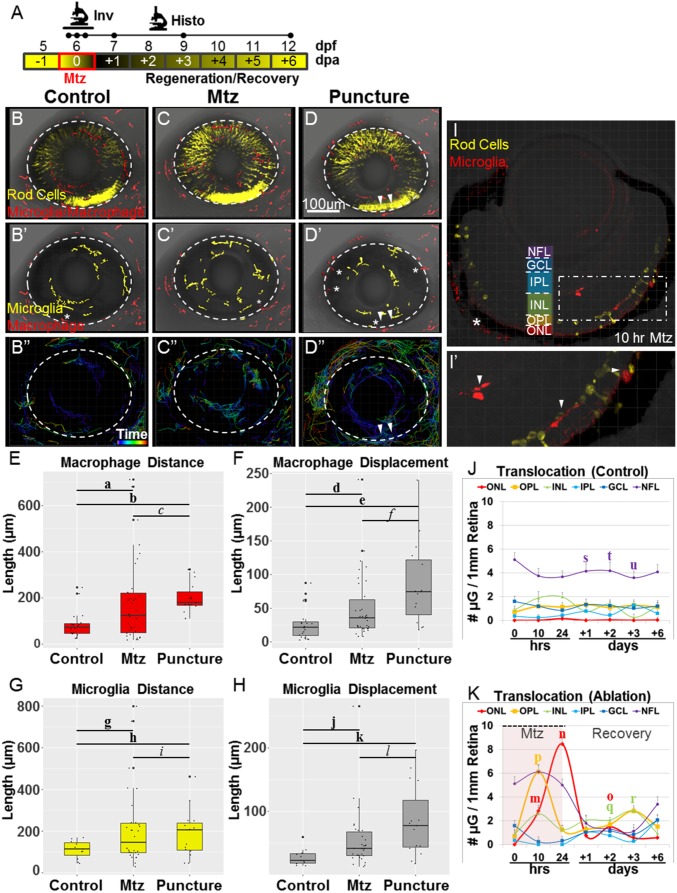Fig. 2.
Only microglia act in the retina following rod cell ablation. (A) Schematic of timelines for intravital (Inv; the line denotes a 20-h time-lapse) and histological (Histo; the initial three dots on the Histo line denote t = 0, 10, and 24 h after exposure to Mtz) assays. (B–D) Whole-retina time-lapse sequences (10-min time interval) were collected from 6-dpf larvae with YFP-NTR–expressing rod cells (yellow in B–D) and Tomato-expressing macrophage/microglia (red in B–D). Immune cell migration paths were quantified in noninjured control (B–B′′), Mtz-treated (C–C′′), and puncture-wounded (D–D′′) retinas. B–D show representative z-projection images taken before the induction of rod cell death or puncture wounding (t = 0). B′–D′ are false-color renderings of the mpeg1:Tomato channel showing the initial positions of microglia (yellow) and macrophages (red); asterisks mark cells present in extraretinal tissue. B′′–D′′ show dragon-tail migration paths of tracked microglia and macrophage cells. Macrophages responded to rod cell death by increasing migration (C′′) but entered the retina only after puncture wounding (D′′; puncture sites are denoted by arrowheads). (E–H) Quantification of macrophage (E and F) and microglia (G and H) migration demonstrates reactivity following rod cell ablation and puncture wounding. (I–K) Somal translocation of microglia was evaluated in control (J) and Mtz-treated larvae (I, I′, and K). (I) Seven-day-postfertilization retina following 10 h of Mtz treatment (56× magnification, asterisk indicates autofluorescence). (I′) An enlarged view of the boxed region in I shows microglia in the INL, OPL, and ONL (arrowheads). (J and K) Quantification of microglia somal position showed no evidence of translocation in controls (J) but increased numbers in the OPL and ONL, concomitant to decreases in the NFL, following rod cell ablation (K). Statistics (effect sizes, 95% confidence intervals, and P values for paired comparisons denoted by letters) are provided in Table S1. For J–K, only pairs made between time point-matched control (J) and experimental (K) data showing reproducible differences are labeled with a bolded letter (error bars indicate SEM). For all others, bolded letters denote pairs showing reproducible differences, and italicized letters denote pairs with no discernible differences.

